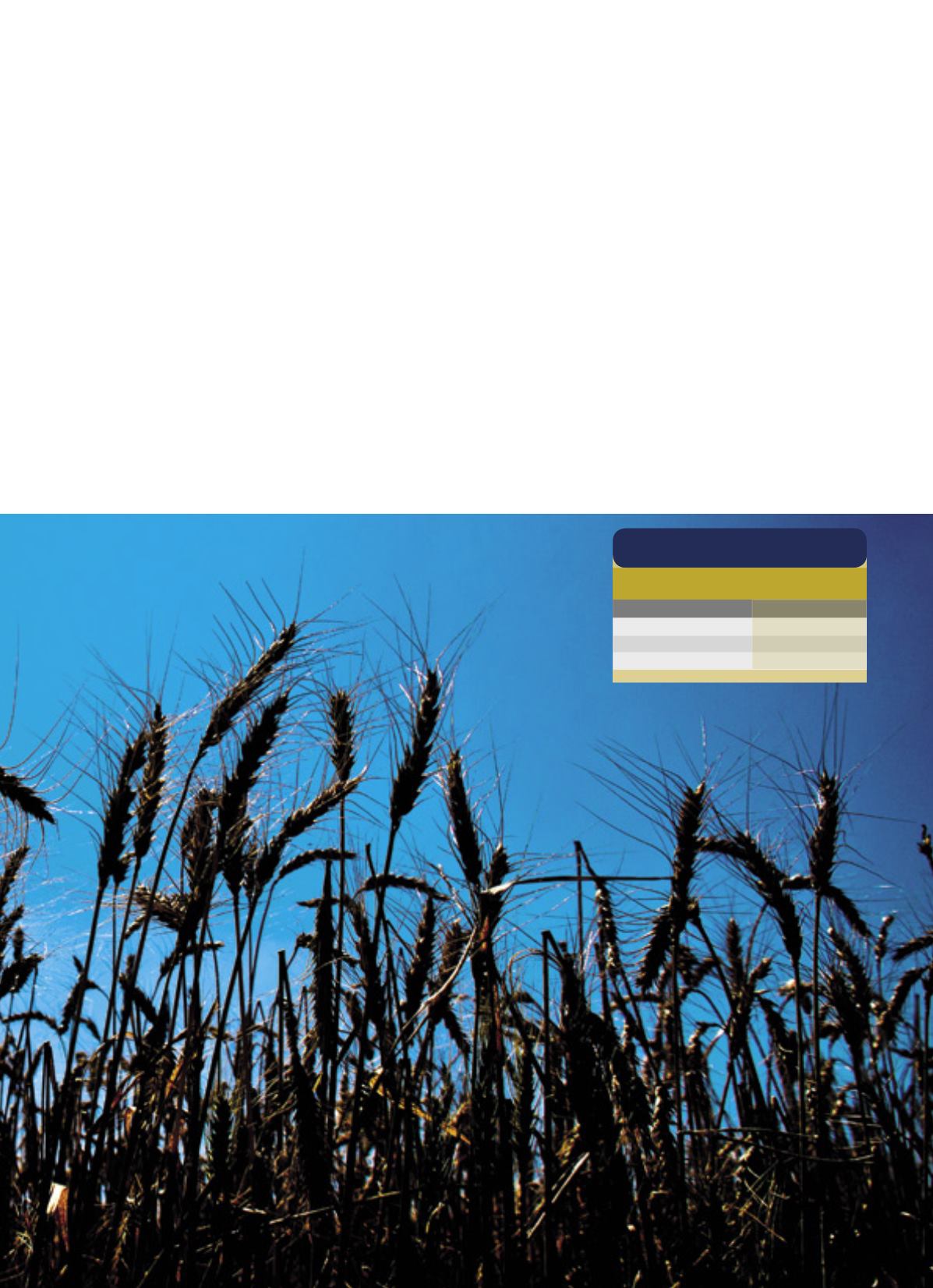
39
To the grain mill
In 2016, average productivity remained at 60 to 70 sacks per hectare,
possibly due to bad weather conditions, like cloudy skies and atypical
rainfalls. They triggered outbreaks of wheat blast in some fields, which
in the past used to be insignificant, but also revealed healthier cultivars,
besides high performance and good quality. Nonetheless, in spite of
moremodest results in this season, the 2017 growing season attracted
more farmers, and the area devoted to the crop has more than doubled,
reaching almost 3.5%of the irrigated area in theWest. The fields suffered
no losses fromwheat blast, but there was a high incidence of Stalk Rot
and Common Root Rot. As a whole, the productivity rates are not known
yet, but some fields in São Desidério yielded up to 130 sacks per hectare,
and quality was very good.
WiththepersistenceofgoodindustrialqualitykernelsproducedinWestern
Bahia,PedroMatanaJúniorobservesthatthefarmershavenowtheopportunity
toreplace,intheshortrun,partofthewheatthatisimportedbythemillsin
SalvadorandBrasília,besidesthemillsinCristalina,AnápolisandGoiânia,in
Goiás.Inthemediumandlongrun,iftheagriculturalplanningoftheirrigated
farmsincorporatesthesefieldspermanently,theconsultantconcludes,“the
occupationoflessthan10%ofallcentralpivotsinoperationintheregion,
equivalentto12thousandhectares,willmaketheconstructionofamillviable”.
es and weed and promotes the biodiversity of soil biota.
The agronomist and consultant maintains that the results
achieved in the 2010 crop year were surprising. “The average pro-
ductivity of 125 sacks per hectare achieved in an irrigated field of
100 hectares corresponded, at that moment, to a national record,
considering that the average in Brazil remains at 35 sacks per hect-
are. Furthermore, the grains were of excellent quality (types: Im-
prover and Bread Flour), traded in Brasília (DF), successfully accept-
ed by the mills and compared to the best grains produced in the
Americas, coming from the farms in Canada”, he recalls.
In spite of this, comments the technician, in the subsequent
crop years of 2011 and 2014 the fields of the new cereal were grown
in only one farm, located close to the pioneering farm. Productivity
rates during this stage oscillated from45 to 70 sacks per hectare, re-
duction that is blamed on late seeding, carried out in themonths of
June and July, after the period considered ideal for seeding in the
region, extending fromMay 10 to May 30. In 2015, wheat was again
grown on the pioneering farm, this time in 500 irrigated hectares,
reaching a performance of 100 sacks per hectare, and once again
high quality kernels. New cultivars were evaluated and incorporat-
ed for 2016, when more farmers adhered to the crop, totaling six in
a cultivated area of nearly 2 thousand hectares.
O CULTIVO DO TRIGO
wheat crops
Área ocupada com o cereal
na região
Ano
Hectares
2015
500
2016
2.000
2017
4.200
Fonte:
Conselho Técnico Aiba/Pedro Matana Jr.


